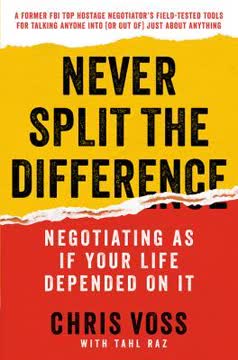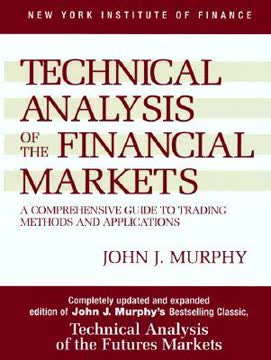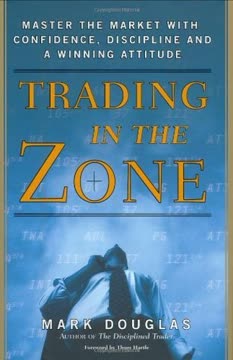Key Takeaways
1. Adapt or perish: The trader's imperative in evolving markets
It is not enough to find an "edge" in financial markets; as any tech entrepreneur can attest, competitive advantages are perishable commodities.
Markets are dynamic. They constantly evolve due to changing economic conditions, technological advancements, and shifts in investor behavior. Successful traders recognize this and adapt their strategies accordingly. They understand that what worked yesterday may not work tomorrow.
Adaptation requires vigilance. Traders must continuously monitor market conditions, analyze new data, and be willing to adjust their approaches. This might involve:
- Exploring new asset classes or trading instruments
- Updating analytical models and tools
- Adjusting risk management techniques
- Seeking out fresh sources of information and insight
Flexibility is key. Rigid adherence to a single strategy, no matter how successful in the past, can lead to failure. Traders who thrive are those who maintain a growth mindset, embracing change as an opportunity rather than a threat.
2. Harness your strengths: The foundation of trading success
We are most apt to find fulfillment in the enactment of our strengths.
Identify your unique talents. Successful traders don't try to be everything to everyone. Instead, they focus on leveraging their natural abilities and acquired skills. This might include:
- Analytical prowess
- Pattern recognition
- Emotional stability
- Risk assessment
- Information synthesis
Align your trading style. Once you understand your strengths, choose trading approaches that play to those strengths. For example:
- Quantitative traders might excel at systematic, algorithmic strategies
- Discretionary traders might thrive on qualitative analysis and intuition
- Long-term investors might leverage patience and big-picture thinking
- Short-term traders might capitalize on quick decision-making and adaptability
Continual development. While focusing on strengths, don't neglect areas for improvement. Seek to expand your skillset in ways that complement your core abilities, creating a more well-rounded trading approach.
3. Cultivate creativity: The lifeblood of entrepreneurial trading
Creativity exercises our core talents, skills, and interests. Without fresh inputs yielding fresh ideas and trades, we starve our strengths.
Embrace an entrepreneurial mindset. Successful traders view themselves as idea generators and opportunity seekers. They don't simply follow established patterns but actively look for novel ways to approach markets.
Foster innovative thinking. Cultivate creativity through:
- Diverse information sources: Read widely, explore different disciplines
- Collaboration: Engage with other traders and thinkers
- Incubation: Allow time for ideas to percolate and connections to form
- Play: Experiment with new concepts in low-stakes environments
Implement a creative process. Develop a systematic approach to generating and refining trading ideas:
- Immerse yourself in market data and information
- Allow for incubation and unconscious processing
- Capture and evaluate insights as they arise
- Test and refine promising concepts
- Implement successful ideas in your trading strategy
4. Embrace positivity: The fuel for peak trading performance
We cannot improve our functioning if we experience ourselves as dysfunctional.
Cultivate positive emotions. Research shows that positive emotional states enhance decision-making, creativity, and resilience. Traders who maintain an optimistic outlook are better equipped to handle market challenges.
Build psychological capital. Focus on developing:
- Self-efficacy: Belief in your ability to succeed
- Hope: Goal-directed energy and planning
- Optimism: Positive attribution of outcomes
- Resilience: Ability to bounce back from setbacks
Create upward spirals. Positive experiences breed more positive experiences. Implement practices that reinforce well-being:
- Gratitude journaling
- Meditation and mindfulness
- Regular exercise
- Nurturing relationships
- Celebrating successes, no matter how small
5. Master your cognitive state: The key to consistent decision-making
To change our well-being set points, we need to cultivate lifestyles that maximize well-being.
Understand your cognitive biases. Recognize that we all have inherent psychological tendencies that can skew decision-making. Common biases in trading include:
- Confirmation bias
- Loss aversion
- Recency bias
- Overconfidence
Develop metacognitive awareness. Practice observing your own thought processes. This allows you to:
- Identify when emotions are influencing decisions
- Recognize patterns of thinking that lead to poor outcomes
- Interrupt automatic responses and make more deliberate choices
Implement state management techniques. Utilize tools to maintain an optimal cognitive state:
- Breathing exercises
- Visualization
- Biofeedback
- Pre-trade rituals
- Regular breaks and recovery periods
6. Build robust processes: The backbone of sustainable trading
We are trained by our routines.
Develop systematic approaches. Create clear, repeatable processes for key aspects of your trading:
- Market analysis and idea generation
- Trade execution and position sizing
- Risk management and portfolio construction
- Performance review and improvement
Emphasize consistency. While flexibility is important, having established routines provides a stable foundation. This allows you to:
- Reduce decision fatigue
- Maintain discipline during market stress
- Objectively evaluate performance over time
Continually refine and adapt. Regularly review and update your processes:
- Incorporate new insights and learnings
- Adjust to changing market conditions
- Eliminate inefficiencies and pain points
7. Nurture well-being: The ultimate trading edge
Happiness is a habit, not a random emotional event befalling us.
Prioritize holistic health. Recognize that trading performance is intimately connected to overall well-being. Focus on:
- Physical health: Regular exercise, proper nutrition, adequate sleep
- Mental health: Stress management, cognitive stimulation, learning
- Emotional health: Relationship building, self-awareness, emotional regulation
- Spiritual health: Finding meaning and purpose beyond trading
Create a supportive environment. Surround yourself with people and conditions that foster growth:
- Seek mentorship and peer support
- Cultivate relationships outside of trading
- Design a workspace that promotes focus and creativity
- Engage in activities that recharge and inspire you
Practice work-life integration. Rather than striving for perfect balance, find ways to harmonize trading with other aspects of life:
- Set clear boundaries between work and personal time
- Incorporate trading insights into broader life philosophy
- Use non-trading experiences to inform market understanding
- Find ways to align trading goals with broader life aspirations
Last updated:
FAQ
What's Trading Psychology 2.0 about?
- Focus on Adaptation: The book emphasizes adapting to changing market conditions rather than relying solely on fixed strategies or emotional control.
- Integration of Strengths: It discusses leveraging personal strengths and character traits to enhance trading performance.
- Creativity and Processes: Creativity is highlighted as a vital component, and the book introduces structured processes to link best practices effectively.
Why should I read Trading Psychology 2.0?
- Enhance Trading Performance: Offers actionable insights to improve trading by understanding psychological aspects and adapting to market changes.
- Research-Based Strategies: Draws on extensive psychological research, providing credible and practical strategies for traders.
- Personal Development: Encourages self-awareness and personal growth, making it valuable beyond trading.
What are the key takeaways of Trading Psychology 2.0?
- Adaptability is Crucial: Emphasizes the need for flexibility in trading strategies to succeed in dynamic markets.
- Strengths and Creativity: Identifying and leveraging personal strengths and creativity are essential for trading success.
- Structured Processes: Linking best practices into structured processes enhances decision-making and performance.
How does Trading Psychology 2.0 define emotional intelligence in trading?
- Understanding Emotions: Involves recognizing and managing emotions to make better trading decisions.
- Flexibility in Approach: Emotionally intelligent traders adjust strategies based on market signals, not rigid preconceptions.
- Interpersonal Skills: Includes reading and responding to others' emotions, enhancing market anticipation and decision-making.
What specific methods does Trading Psychology 2.0 recommend for adapting to change?
- Dynamic Adaptation: Develop processes for dynamically adjusting strategies based on market conditions.
- Self-Assessment Exercises: Use exercises to identify strengths, weaknesses, and areas for improvement.
- Building a Support Network: Engage with other traders to share insights and foster a sense of community.
How does Trading Psychology 2.0 address the issue of cognitive biases in trading?
- Awareness of Biases: Emphasizes understanding cognitive biases to make more rational trading decisions.
- Strategies to Mitigate Biases: Suggests maintaining a trading journal and seeking peer feedback to counteract biases.
- Encouraging Diverse Perspectives: Engaging with diverse perspectives helps balance decision-making and reduce biases.
What role does creativity play in trading according to Trading Psychology 2.0?
- Generating Unique Ideas: Creativity is essential for developing unique trading strategies and ideas.
- Adapting to Market Changes: Creative thinking allows for strategy adaptation in response to market shifts.
- Enhancing Problem-Solving Skills: Creativity improves problem-solving, crucial for navigating complex market scenarios.
What are some practical exercises suggested in Trading Psychology 2.0?
- Emotion Journals: Track daily emotional experiences related to trading to identify patterns and manage responses.
- Mind Mapping: Use mind mapping to organize thoughts and generate new ideas, enhancing analytical skills.
- Daily Quotas for Ideas: Set daily quotas for generating new trading ideas to foster creativity and engagement.
How does Trading Psychology 2.0 suggest handling setbacks and losses?
- Embrace Losses as Learning: View losses as growth opportunities, analyzing mistakes for future insights.
- Mindfulness Practices: Use mindfulness techniques to manage emotions during setbacks, preventing impulsive decisions.
- Developing a Growth Mindset: Maintain a positive outlook and growth mindset to stay resilient and motivated.
What is the significance of the "see-feel-change" approach in Trading Psychology 2.0?
- Emotional Engagement: Emphasizes emotional engagement in the change process, inspiring action through new possibilities.
- Catalyzing Action: Encourages finding small wins to build momentum and foster a sense of accomplishment.
- Overcoming Complacency: Helps move beyond complacency by creating urgency and emotional connection to goals.
What are some best practices mentioned in Trading Psychology 2.0?
- Daily Trading Reviews: Conduct structured reviews to assess decisions and encourage continuous improvement.
- Scenario-Based Preparation: Prepare for various market scenarios to anticipate outcomes and maintain control.
- Using Meditation: Incorporate meditation to enhance focus and emotional regulation, crucial for decision-making.
What are the best quotes from Trading Psychology 2.0 and what do they mean?
- "A different restaurant every day": Highlights adaptability in trading, akin to a restaurant meeting customer demands.
- "We cannot achieve excellence...": Stresses consistent effort and practice as key to achieving success.
- "Frustration is the mother of adaptation": Suggests setbacks can prompt reassessment and necessary strategy adjustments.
Review Summary
Trading Psychology 2.0 receives high praise for its comprehensive approach to trading and psychology. Readers appreciate its insights on adapting to market conditions, improving oneself, and following best practices. The book is lauded for its depth and valuable advice, particularly the section on 57 best practices. Some critics note its length and repetitiveness, suggesting it could be condensed. Despite these concerns, many readers consider it one of the best books on trading psychology, offering practical strategies for enhancing trading performance and personal growth.
Similar Books










Download PDF
Download EPUB
.epub digital book format is ideal for reading ebooks on phones, tablets, and e-readers.







